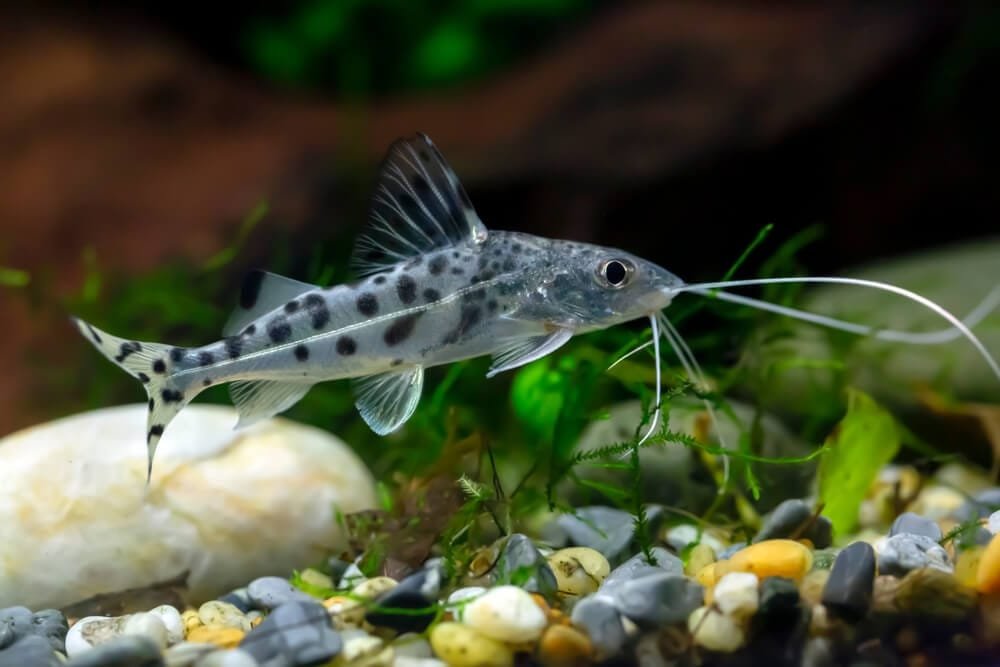Are you curious about the fascinating meanings behind the presence of goldfish in various cultures around the world? Delve into the captivating world of symbolism and cultural significance as we explore the hidden meanings behind the goldfish. From ancient Chinese folklore to Japanese art and even the Pyramids of Egypt, the goldfish holds a multifaceted symbolism that transcends geographical boundaries and time itself. Drawn by their vibrant colors and graceful presence, people have assigned a wide range of meanings to these beautiful creatures, and we are about to embark on a journey to uncover them all. Get ready to unravel the secrets of the goldfish and discover how it has woven itself into the tapestry of different cultures.
Chinese culture
Ancient symbolism
In Chinese culture, goldfish hold deep symbolic meaning and have been revered for centuries. They are often associated with wealth, abundance, and good fortune. The vibrant colors of goldfish reflect their status as a symbol of prosperity. In ancient times, goldfish were considered a luxury and were often kept by wealthy families as a sign of affluence. The presence of goldfish in a household was believed to bring positive energy and attract wealth and success.
Prosperity and wealth
Goldfish are highly regarded as a symbol of prosperity and wealth in Chinese culture. The Chinese word for goldfish, “jin yu,” sounds similar to the word for gold and jade, which further strengthens the association with wealth. The belief is that keeping goldfish in your home or business establishment will bring financial prosperity and attract good fortune. Many people even place goldfish tanks or ponds near their entrance to invite wealth and abundance into their lives.
Feng Shui
Feng Shui, the ancient Chinese practice of harmonizing individuals with their surroundings, also recognizes the symbolism of goldfish. According to Feng Shui principles, goldfish are believed to bring positive energy and promote harmonious relationships. By placing a fish tank or pond in specific areas of your home or office, you can enhance the flow of positive chi and create a balanced environment. Goldfish are often kept in the southeast corner of a home or office, as the southeast is associated with wealth and abundance in Feng Shui.
Marriage and relationships
In Chinese culture, goldfish are also seen as a symbol of a happy marriage and harmonious relationships. The pairing of goldfish represents balance, unity, and love between partners. During weddings, it is common for couples to release a pair of goldfish into a pond or tank as a symbol of their union and shared future. The presence of goldfish is believed to bring luck, happiness, and longevity to the marriage. In Chinese tradition, fish are also considered to be a fertility symbol, representing the abundance of children in a family.
Japanese culture
Koi fish
In Japanese culture, goldfish are a subtype known as koi fish, and they hold significant symbolism. Koi fish are renowned for their vibrant colors and patterns, which are believed to represent various qualities and virtues.
Symbol of perseverance
Koi fish are seen as a symbol of perseverance and determination in Japanese culture. They are known for their ability to swim upstream and overcome obstacles, which is seen as a representation of the Japanese spirit of never giving up. The idea of the koi fish swimming upstream also symbolizes personal growth, strength, and the ability to overcome adversity.
Wisdom and good luck
In addition to perseverance, koi fish are associated with wisdom and good luck in Japanese culture. The image of a koi fish swimming through still waters represents serenity, clarity, and calmness of mind. Koi fish are believed to bring good fortune and abundance to those who possess their image or have them in their presence.
Harbinger of good fortune
Koi fish are often considered to be a harbinger of good fortune in Japanese culture. Their bright and striking colors are believed to attract positive energy and bring prosperity and wealth. Koi fish are commonly depicted in Japanese art, and their presence is highly valued, especially during celebrations and festivals.
Indian culture
Hindu mythology
In Indian culture, goldfish have significant symbolism rooted in Hindu mythology. They hold connections to various gods and goddesses, as well as several Hindu traditions and rituals.
Symbol of fertility and abundance
Goldfish are considered a symbol of fertility and abundance in Indian culture. Their vibrant colors and graceful movements are seen as representations of vitality and growth. In Hindu mythology, it is believed that the goddess Lakshmi, the goddess of wealth and prosperity, resides in the form of a goldfish. Keeping goldfish in one’s home is believed to attract wealth, prosperity, and blessings of abundance.
Religious ceremonies
Goldfish also play a role in various religious ceremonies and rituals in the Indian culture. During certain Hindu festivals, such as Diwali or the festival of lights, goldfish are released into rivers or ponds as an offering to deities. This act is believed to bring good luck, cleanse sins, and bring blessings. The release of goldfish symbolizes the letting go of negative energies and welcoming positive changes and new beginnings.
Gifting and auspicious occasions
Goldfish are often gifted during auspicious occasions and ceremonies in Indian culture. They are seen as a token of good luck, fortune, and blessings. Giving goldfish as a gift is believed to bring prosperity and joy to the recipient. Goldfish tanks and ponds are also popular decorative elements in Indian households, symbolizing abundance and harmony.
Thai culture
Symbol of luck and fortune
In Thai culture, goldfish are highly regarded as symbols of luck and fortune. Their bright and shimmering colors are believed to attract positive energies and bring good fortune. Many Thai people keep goldfish in their homes or businesses to invite prosperity and abundance into their lives.
Representing loyalty and friendship
Goldfish also symbolize loyalty and friendship in Thai culture. The Thai word for goldfish, “pla nin,” sounds similar to the word for loyalty, which strengthens the association between the two. In Thai culture, it is believed that goldfish demonstrate loyalty and devotion by staying together in groups and swimming harmoniously. This concept of loyalty and friendship is highly valued in Thai society.
Buddhist symbolism
Goldfish hold significance in Buddhism, which is the predominant religion in Thailand. Buddhists believe that goldfish symbolize enlightenment and spiritual transformation. The graceful movements of goldfish are seen as a reflection of the peaceful and serene nature that practitioners aim to cultivate. Goldfish ponds or tanks are often found in Buddhist temples, serving as reminders of the impermanence of life and the pursuit of spiritual growth.
Songkran Festival
The Songkran Festival, also known as the Thai New Year, is a major celebration in Thai culture. During this festival, it is a common tradition to release goldfish into rivers or ponds as a symbolic gesture. This act is believed to bring good luck and wash away bad fortunes from the previous year. Releasing goldfish during the Songkran Festival is seen as a way to start the new year with positive energy and fresh beginnings.
Persian culture
Associated with beauty and grace
In Persian culture, goldfish are highly regarded for their beauty and grace. The vibrant and shimmering colors of goldfish are seen as a symbol of elegance and refinement. Persian literature and art often portray goldfish as enchanting creatures, capturing the imagination and fascination of people.
Symbol of love and romance
Goldfish are also associated with love and romance in Persian culture. The Persian word for goldfish, “mahī,” is often used as a term of endearment for a loved one. Goldfish imagery is frequently used in Persian poetry and paintings, symbolizing the delicate and tender nature of love. The graceful movements and vibrant colors of goldfish are believed to evoke feelings of passion and desire.
Art and literature
Goldfish hold a significant place in Persian art and literature. They are often depicted in miniature paintings, carpets, and ceramics, showcasing their cultural importance and symbolic value. Goldfish motifs are commonly used in Persian architectural designs, adding a touch of beauty and elegance to buildings. The artistic representation of goldfish reflects their cultural significance and the appreciation for their aesthetic appeal.
Persian New Year
Goldfish play a role in the Persian New Year celebrations, known as Nowruz, which is a widely observed tradition in Persian culture. During Nowruz, many families decorate their homes with goldfish tanks or bowls. These decorations symbolize the rebirth and renewal associated with the coming of spring. Goldfish tanks are adorned with vibrant plants and flowers, creating a visually stunning display of nature’s beauty and the anticipation of a new beginning.
European culture
Christian symbolism
In European culture, goldfish hold symbolic significance, particularly in Christian traditions. The goldfish’s connection to Christianity stems from its association with the fish symbol, which has deep roots in the early days of Christianity. The fish symbol was used by early Christians as a secret code to identify fellow believers during times of persecution.
Renewed life and transformation
Goldfish are often seen as symbols of renewed life and transformation in European culture. Their vibrant colors, graceful movements, and ability to adapt to different environments represent the cyclical nature of life and the opportunity for growth and change. The image of a goldfish swimming freely is believed to inspire individuals to embrace new beginnings and embark on transformative journeys.
Aquarium and pet culture
Goldfish have a long history in European culture as popular pets and decorative elements in aquariums. European households often keep goldfish in aquariums as a source of leisure and aesthetic appeal. The act of caring for goldfish is seen as a calming and therapeutic hobby, providing a sense of tranquility and relaxation. The vibrant colors of goldfish also add a visually pleasing element to home decor.
Decorative element
Goldfish are frequently used as decorative elements in European culture. Their vibrant colors and gracefully flowing movements make them ideal subjects in artwork, home decor, and ornamental pieces. Goldfish motifs can be found in various forms, such as paintings, sculptures, and even jewelry. The aesthetic value of goldfish adds a touch of elegance and beauty to European art and design.
American culture
Prestige and social status
In American culture, goldfish have historically been associated with prestige and social status. The act of keeping goldfish as pets was once considered a luxury and a symbol of wealth. This association stems from the exclusivity of goldfish ownership in the early days, when they were imported from East Asia and were not easily accessible to the general public.
Ornamental fish in households
Goldfish have long been popular as ornamental fish in American households. Their vibrant colors and graceful movements make them visually pleasing additions to home aquariums. Goldfish tanks are often seen as decorative elements, adding a touch of elegance to living spaces. Many people find watching goldfish swim to be a soothing and calming experience, providing a sense of relaxation and tranquility.
Recreation and leisure
Goldfish ownership in America is often linked to recreation and leisure. Keeping goldfish as pets is a popular hobby among individuals of all ages. Many people enjoy the process of selecting and caring for goldfish, finding it to be a rewarding and enjoyable pastime. The act of leisurely observing goldfish in aquariums can be a source of relaxation and a form of entertainment.
Goldfish in popular culture
Goldfish have also made their way into American popular culture, featuring in various forms of media such as movies, cartoons, and literature. Their vibrant colors and playful nature make them captivating subjects for storytelling and entertainment. Goldfish have become beloved characters in children’s books and cartoons, further enhancing their cultural presence and symbolism in American society.
African culture
Religious and spiritual significance
In African culture, goldfish hold religious and spiritual significance. They are often associated with the divine and are believed to have a connection to ancient deities and ancestral spirits. Goldfish are seen as emissaries between the physical and spiritual realms, representing the cosmic forces at play.
Belief in ancestral protection
Goldfish are also believed to provide protection and guidance from ancestral spirits in African culture. It is believed that ancestral spirits can take the form of goldfish to communicate with the living. Keeping goldfish in homes or natural bodies of water is seen as a way to invite protection, blessings, and spiritual guidance from ancestors.
Symbol of prosperity and protection
Similar to other cultures, goldfish are viewed as symbols of prosperity and protection in various African communities. Their vibrant colors and graceful movements are seen as indicators of good fortune and divine favor. Many African societies believe that the presence of goldfish in homes or sacred spaces brings blessings, abundance, and protection against evil forces.
Traditional ceremonies and rituals
Goldfish play a role in traditional ceremonies and rituals in African culture. They are often released into bodies of water during special occasions or ceremonies as a symbolic gesture. The release of goldfish represents the letting go of negative energies and the welcoming of positive changes. The use of goldfish in rituals serves as a way to honor ancestral traditions and connect with the spiritual world.
South American culture
Connectivity with the divine
In South American culture, goldfish are believed to have a deep connection to the divine. Their bright colors and graceful movements are seen as a reflection of the higher spiritual realms. Goldfish are often associated with deities and spirits, symbolizing a bridge between the physical and supernatural worlds.
Symbol of good luck and abundance
Goldfish are considered symbols of good luck and abundance in South American culture. Their vibrant colors and graceful movements are believed to attract positive energy and bring prosperity. Many South Americans keep goldfish in their homes or businesses to invite good fortune and wealth.
Cultural festivals and rituals
Goldfish are celebrated in various cultural festivals and rituals in South America. The decorative aspects of goldfish, with their vibrant colors and graceful movements, are often incorporated into parades, dances, and ceremonies. These events showcase the cultural significance and symbolism of goldfish in South American communities.
Decorative and ornamental fish
In South American culture, goldfish are often used as decorative and ornamental fish. Their vibrant colors and graceful movements make them visually appealing additions to homes and public spaces. Goldfish tanks and ponds are popular features in gardens, parks, and even urban environments, adding a touch of beauty and vibrancy to the surroundings.
Australian Aboriginal culture
Creation and Dreamtime stories
In Australian Aboriginal culture, goldfish hold significance in Creation and Dreamtime stories. These stories are an integral part of Aboriginal culture, explaining the origins of the world and the existence of various life forms. Goldfish, with their vibrant colors and graceful movements, are often featured in these stories as symbols of life, transformation, and adaptability.
Symbol of transformation and adaptability
Goldfish are seen as symbols of transformation and adaptability in Australian Aboriginal culture. Their ability to thrive in different environments and adapt to changing conditions is seen as a valuable trait. Goldfish represent the concept of resilience and the capacity to navigate through life’s challenges and changes.
Cultural totems and spiritual connections
In Australian Aboriginal culture, different animals and natural elements are associated with spiritual significance and are considered cultural totems. While goldfish may not be a traditional totem, their symbolism and cultural importance are recognized and valued within Aboriginal communities. Goldfish serve as a reminder of the interconnectedness between humans and the natural world, highlighting the spiritual connections that exist.
Art and contemporary symbolism
Goldfish imagery can be found in various forms of Australian Aboriginal art. Artists may use goldfish motifs or incorporate their vibrant colors and graceful movements into their artworks. Goldfish paintings and sculptures serve as contemporary expressions of cultural symbolism and values, reflecting the ongoing significance of goldfish in Australian Aboriginal culture.
In conclusion, goldfish hold profound symbolic meaning in various cultures around the world. From ancient Chinese beliefs in wealth and prosperity to the deep spiritual connections in African and Australian Aboriginal cultures, goldfish represent a range of virtues and cultural values. Whether associated with prestige, transformation, or divine connections, goldfish continue to fascinate and inspire through their vibrant colors and graceful movements. The symbolism of goldfish serves as a reminder of the universal aspects of human culture and our shared beliefs in luck, abundance, and the beauty of the natural world.





